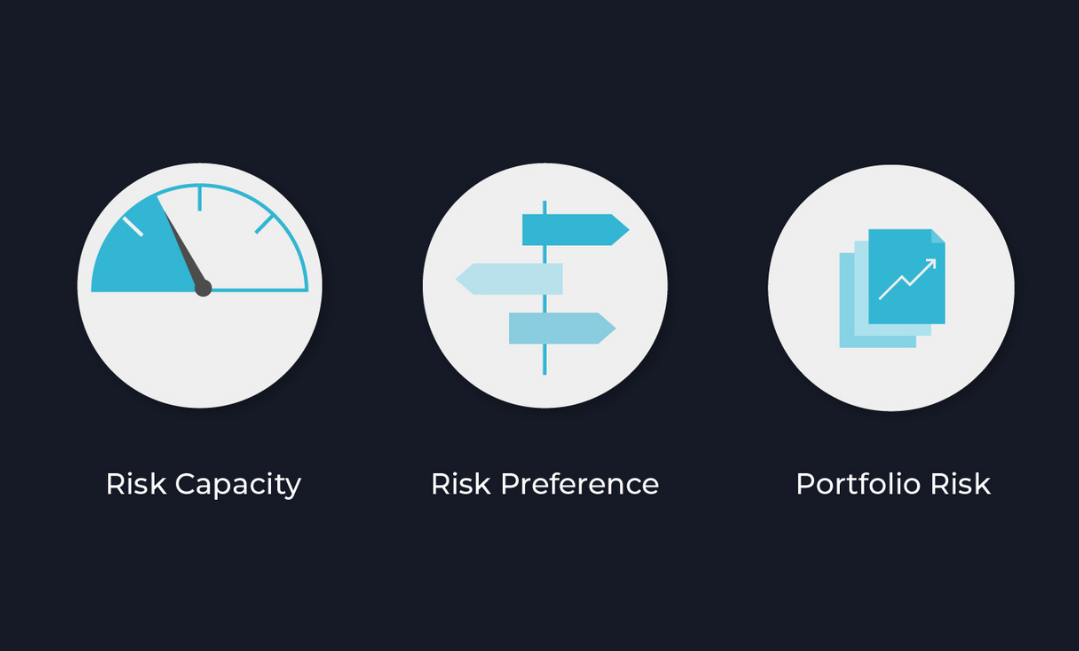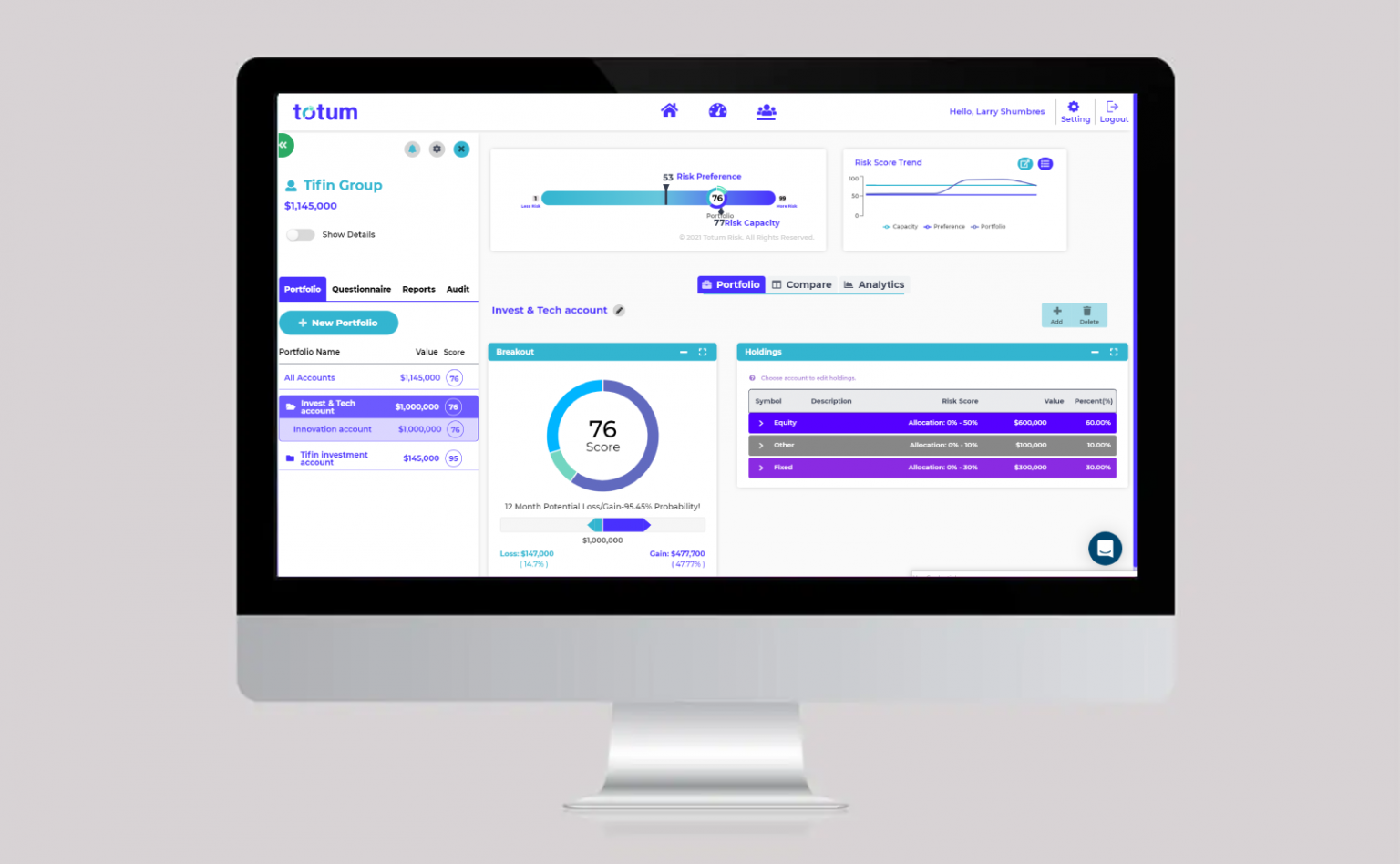At TIFIN Wealth Risk Alignment, we’ve introduced a better way to quantify risk.
The usual risk tolerance questionnaire for advisor includes questions about how your client feels about money and investing. This score has traditionally been the predominant, if not the sole, factor in creating a portfolio for clients.
This risk tolerance methodology was a great first step in matching investors with appropriate portfolios, but unfortunately, it doesn’t go far enough. Risk tolerance has typically received a one-dimensional treatment when it deserves a multi-dimensional consideration. FINRA defines “Risk Tolerance” as “a customer’s ability and willingness to lose some or all of [the] original investment in exchange for greater potential returns.”
The questions of a typical risk tolerance questionnaire fall into two categories: First, the more quantitative questions about assets, income, investment time horizon, and the like pertain to your client’s risk capacity. Think of risk capacity as the cold, hard math, the ability component of FINRA’s definition of risk tolerance.
Meanwhile the more qualitative questions about the investor’s desire for gains versus loss aversion frame his or her risk preference. This is the psychology portion of risk tolerance, and the willingness part of FINRA’s definition.
In the above definitions, it is risk ability that has often been underrepresented in typical questionnaires. Sometimes your client’s risk capacity and risk preference are quite similar. In these cases, the old method of measuring risk tolerance works fine. However, many investors differ substantially between their risk capacity and risk preference. For these clients, the old risk tolerance process results in portfolios that don’t reflect their true risk band.
As an example, suppose you have a young client with an extended time horizon, solid income, and several other data points that lean toward high-risk tolerance. But, because of upbringing or some other reason, this investor is quite risk averse. The one-dimensional risk tolerance questionnaire will say this client has a lower risk tolerance than what they could actually withstand. Likewise, the opposite can happen.
This gross misinterpretation of true risk can lead to unhappy clients who choose to take their business elsewhere. Even worse, your firm could be exposed to arbitration.
TIFIN Wealth Risk Alignment solves this problem. Built by experts in the finance industry, our platform provides a multi-dimensional approach, and so much more.
Our fact-based questionnaire provides a score for risk capacity, risk preference, as well as portfolio risk.
-
RISK CAPACITY – Your ability to take risk based on the facts of your current life situation
-
RISK PREFERENCE – How much risk you are willing to take based on your personalized preferences and prior experiences with investing
-
PORTFOLIO RISK – A calculation of the assets of your portfolio and how much risk exposure you have to potentially change
The risk capacity and risk preference scores provide parameters for the portfolio risk score. This score allows you to check if a certain portfolio is within a client’s risk band and if it leans too strongly towards risk capacity or risk preference.
In addition to the questionnaire, TIFIN Wealth Risk Alignment makes it easy to integrate with third-party accounts. Once integrated, our system performs a daily upload of client portfolios and scores them. Any score changes are then time-stamped. The result is improved management, customer satisfaction, and compliance.



